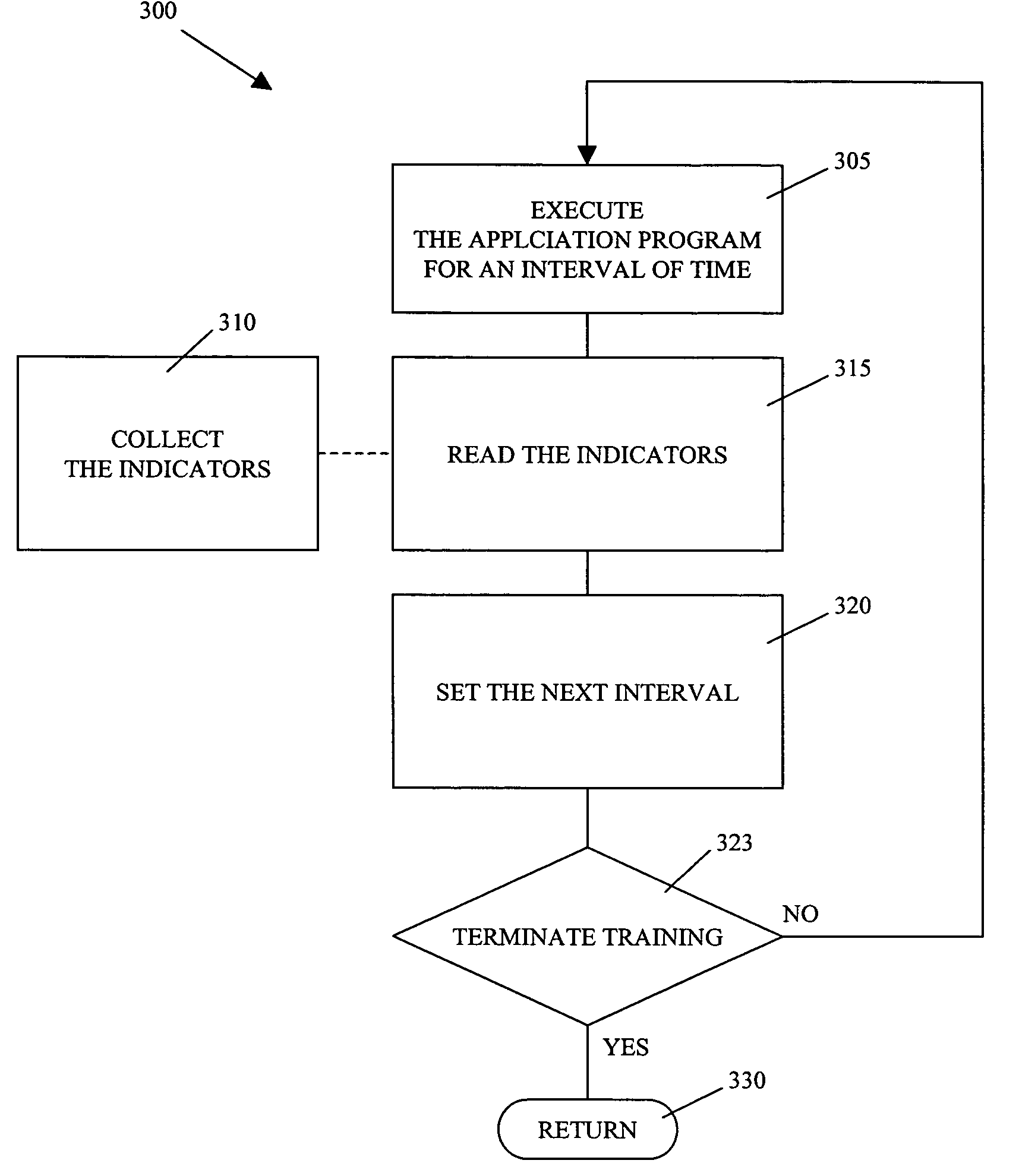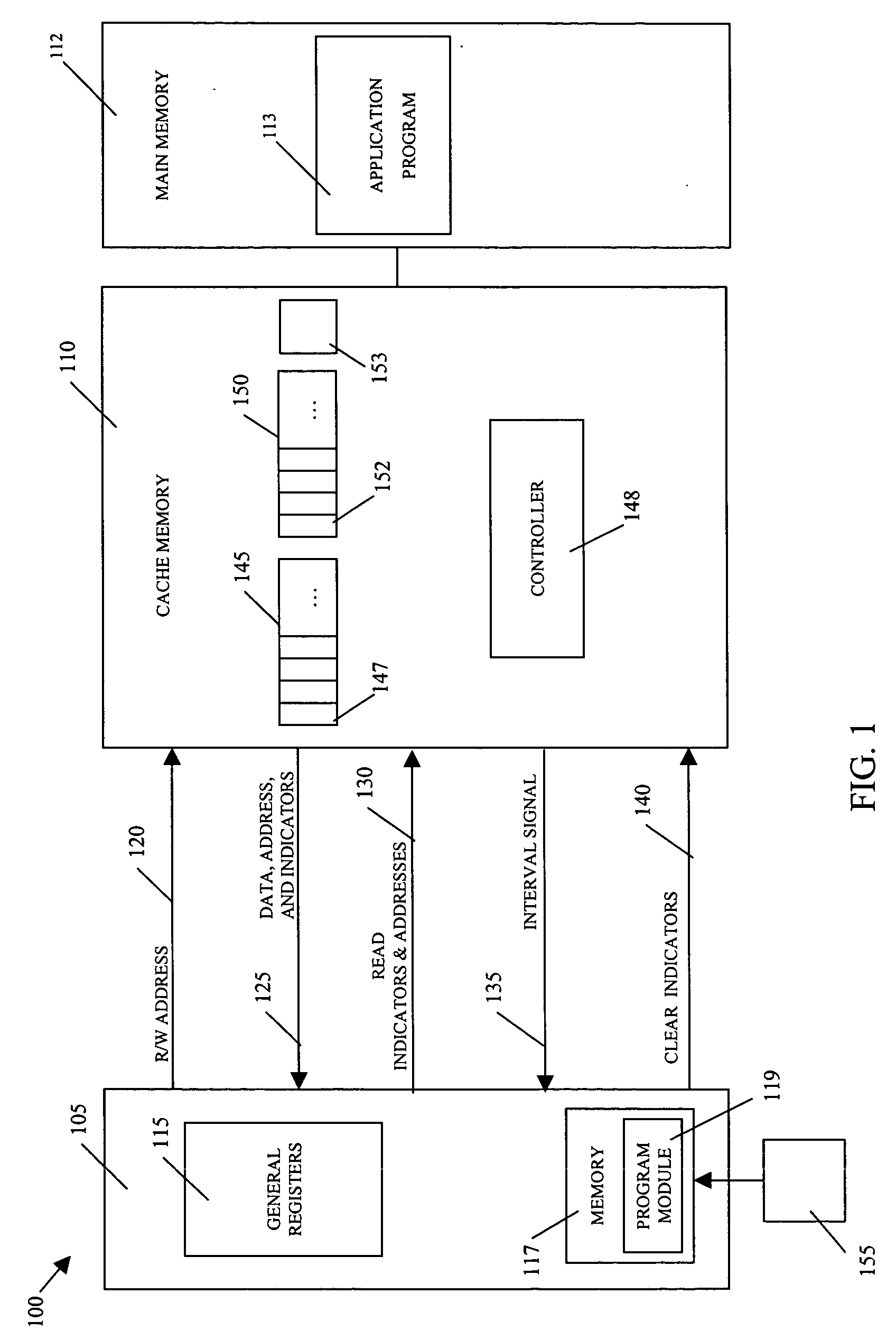Determining an arrangement of data in a memory for cache efficiency
a technology of memory and data, applied in the field of computer systems, can solve the problems of large cache memory, large time required to access the main memory and retrieve data needed by the cpu, and the loss of valuable time while the cpu, etc., and achieve the effect of efficient cache operation
- Summary
- Abstract
- Description
- Claims
- Application Information
AI Technical Summary
Benefits of technology
Problems solved by technology
Method used
Image
Examples
Embodiment Construction
[0027]FIG. 1 is a block diagram of a computer system 100. The principal components of system 100 are a CPU 105, a cache memory 110, and a main memory 112.
[0028] Main memory 112 is a conventional main memory component into which is stored an application program 113. For example, main memory 112 can be any of a disk drive, a compact disk, a magnetic tape, a read only memory, or an optical storage media. Although shown as a single device in FIG. 1, main memory 112 may be configured as a distributed memory across a plurality of memory platforms. Main memory 112 may also include buffers or interfaces that are not represented in FIG. 1.
[0029] CPU 105 is processor, such as, for example, a general-purpose microcomputer or a reduced instruction set computer (RISC) processor. CPU 105 may be implemented in hardware or firmware, or a combination thereof. CPU 105 includes general registers 115 and an associated memory 117 that may be installed internal to CPU 105, as shown in FIG. 1, or extern...
PUM
 Login to View More
Login to View More Abstract
Description
Claims
Application Information
 Login to View More
Login to View More - R&D
- Intellectual Property
- Life Sciences
- Materials
- Tech Scout
- Unparalleled Data Quality
- Higher Quality Content
- 60% Fewer Hallucinations
Browse by: Latest US Patents, China's latest patents, Technical Efficacy Thesaurus, Application Domain, Technology Topic, Popular Technical Reports.
© 2025 PatSnap. All rights reserved.Legal|Privacy policy|Modern Slavery Act Transparency Statement|Sitemap|About US| Contact US: help@patsnap.com



